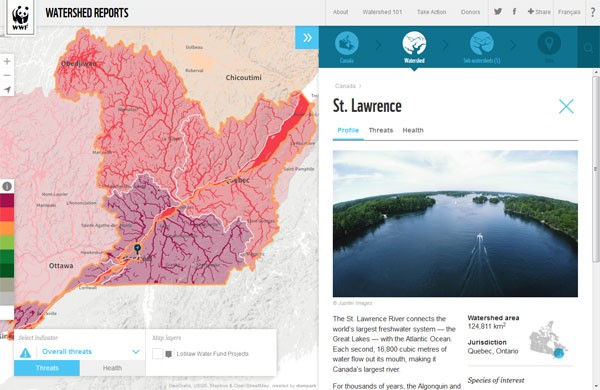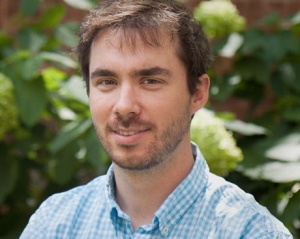“At Concordia I was lucky to get a nature conservation internship, because that served as my bridge into the not-for-profit environmental sector,” he says. “I learned hard skills and soft skills that landed me a job with WWF six months after graduating.”
A teacher’s assistant while at Concordia, Snider started out at WWF-Canada as a data-crunching geographic information system analyst. Now he supervises a Canada-wide team of specialists from WWF-Canada headquarters in Toronto.
Although he considers himself more of a technician than a science communicator, he engages with different types of organizations, from conservation groups to government monitoring programs.
“I’m involved in projects at various levels across the country,” Snider says. “They pave the way for community programs and data collection to take place.”
Canadians taking responsibility for water systems
Recently the conservation sector has been focusing on empowering individuals and groups to help with large-scale projects such as Watershed Reports.
“We’re formatting a network approach,” Snider explains. He points to the importance of cross-organizational collaboration. “Citizen scientists, community groups, recreational campers and manufacturing plants all have a role to play in nature conservation.”
The report’s strong foundation of data will make it easier for advocacy organizations to inform high-level decision makers in policy and best-business practices.
The goal is to have all of Canada’s watersheds rated as “good condition” by 2025 — although most of the watersheds assessed so far show concerning threat levels.
Watershed Reports challenges Canadians to act. Its interactive map also displays volunteering and clean-up opportunities.
“We want to see a broad audience log on to Watershed Reports, from a family of recreational campers to a construction company CEO,” Snider says. “Ultimately, we hope to provide better local water management from a national online platform.”
 The World Wildlife Fund's Watershed Reports is an online tool that reports the health of Canada's water systems. | Courtesy: World Wildlife Fund
The World Wildlife Fund's Watershed Reports is an online tool that reports the health of Canada's water systems. | Courtesy: World Wildlife Fund
 James Snider, GrDip 07, leads the WWF-Canada Watershed Reports project.
James Snider, GrDip 07, leads the WWF-Canada Watershed Reports project.